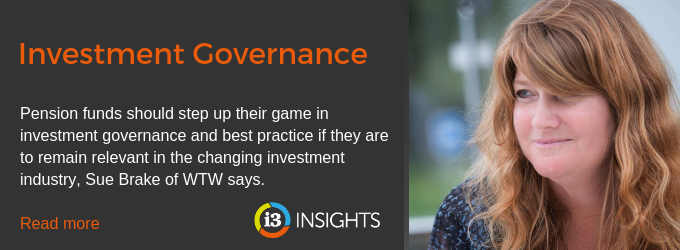In February, United States pension fund CalSTRS adopted its eighth and last investment belief, finalising a project that started in 2015 to establish its first-ever set of investment beliefs.
This set of eight beliefs addresses issues such as diversification, illiquidity premia and agency risk.
Probably the most interesting of the beliefs are the conviction that proper management of environmental, social and corporate governance issues will add value over the long term and that in-house management enables the fund to best harness its resources.
But overall, there are no real surprises here.
Yet, we shouldn’t underestimate the impact this clarification of an organisation’s viewpoints can have on the efficiency of a fund, Roger Urwin, Global Head of Investment Content at Willis Towers Watson, says in an interview with [i3] Insights.

The creation of some sort of mandate-relevant beliefs is quite an art form which can help an organisation to be much more disciplined about an investment approach and it is a time saver at the same time
Urwin didn’t want to comment on CalSTRS’ beliefs in particular, but acknowledges that in many cases the reaction to a new set of investment beliefs is rather underwhelming.
“To be fair, some people would say that many of these beliefs are kind of obvious; they are not cutting edge as such. That makes some investment people less generous about them,” he says.
“[But] don’t underestimate the challenge in creating a belief system.
“Investment is a very difficult craft of decision-making under volatile, uncertain, complex, ambiguous circumstances and all of those things, particularly ambiguity, create the difficulty of operating without a schema as it were.
“The creation of some sort of mandate-relevant beliefs is quite an art form which can help an organisation to be much more disciplined about an investment approach and it is a time saver at the same time.”
This holds true for pure financial beliefs, but also broader concepts that are held by the organisation.
“Spelling out the mandate in the extra-financial component is often the most difficult,” Urwin says.
“A lot of my work is to help with beliefs in that area, where I think the beliefs have been the most difficult to get over the line.”
Often these non-financial beliefs relate to the values held by an organisation and the reasons why an organisation has a ‘social licence’ to operate.
But they also can address broad secular trends, which the organisation might believe could alter the world as we know it. And this is where it gets more interesting, because often there is less consensus about how some of these mega-trends, as Urwin calls them, will play out.

If everyone shares the same belief, then it is very unlikely it’s got much value creation overall
“Mega-trends are new to beliefs, but there is clear evidence that they are important,” he says.
“Because they are structural, there is a reason why long-term thematics might be a candidate for the edgier beliefs. What I mean by edgier beliefs are beliefs that are differentiating and they are ultimately more responsible for value creation than the ho-hum beliefs that everyone shares.
“If everyone shares the same belief, then it is very unlikely it’s got much value creation overall. But with edgy beliefs there is that potential to do better, certainly in the area of mega-trends.”
But for many funds, this is still a work in progress, he says.
“The degree to which people have finished off their thinking here, I just don’t think it has happened so far,” he notes.
__________
[i3] Insights is the official educational bulletin of the Investment Innovation Institute [i3]. It covers major trends and innovations in institutional investing, providing independent and thought-provoking content about pension funds, insurance companies and sovereign wealth funds across the globe.



